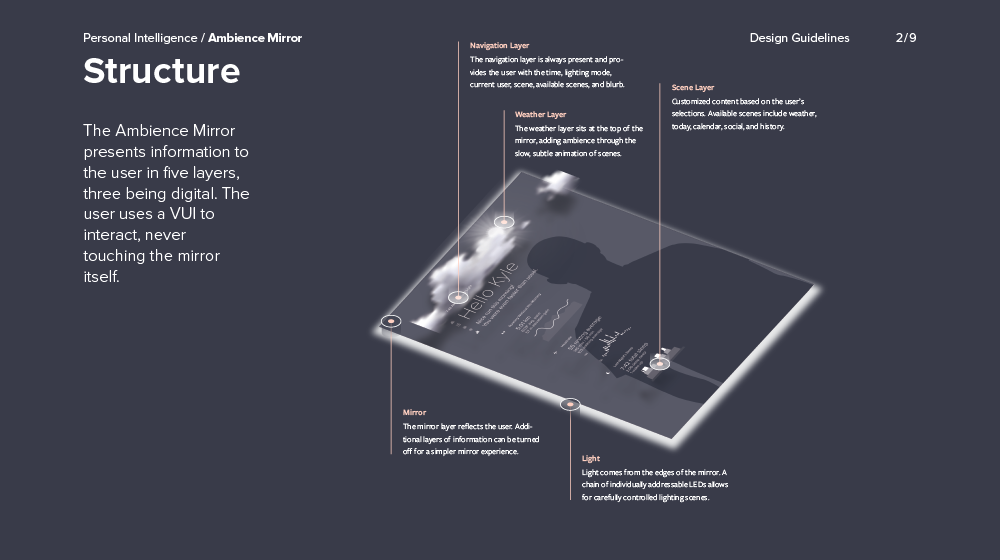Refine 28
Design Guidelines
Design guidelines capture high-level decisions and the thinking behind them. Aimed at maintaining design intention over time, the primary audience of design guidelines is design teams, though design-savvy developers might also find them useful. Design guidelines should not get into executional details and specifications of detailed documentation, but should instead focus on arming designers and product owners with the information they need to make decisions around the product or service.
In a documentation-heavy process, the design guidelines can aggregate other artifacts such as experience principles and conceptual models and can guide readers to other documents such as flow diagrams and detailed documentation. Because of their central role in the creation of a consistent product or service, design guidelines should be diligently maintained throughout the life and various iterations of an experience.
Buy from Amazon Buy ElsewherePersonal Intelligence
Ambience Mirror
This excerpt from Ambience Mirror’s design guidelines shows how each scene is constructed via layers of elements and then how those elements are composed of just a handful of simple ingredients.
Related Chapters
14
Experience Principles
How do we get stakeholders to align on a direction? How do we stay true to our original vision?
27
Component Library
How do we ensure that designs stay consistent across time and teams? How do we keep ourselves organized?
32
Detailed Documentation
How much documentation is too much documenation? How do we communicate dynamic designs?
33
Design Assurance
How do we ensure quality through execution? What should we expect when collaborating with implementers?
